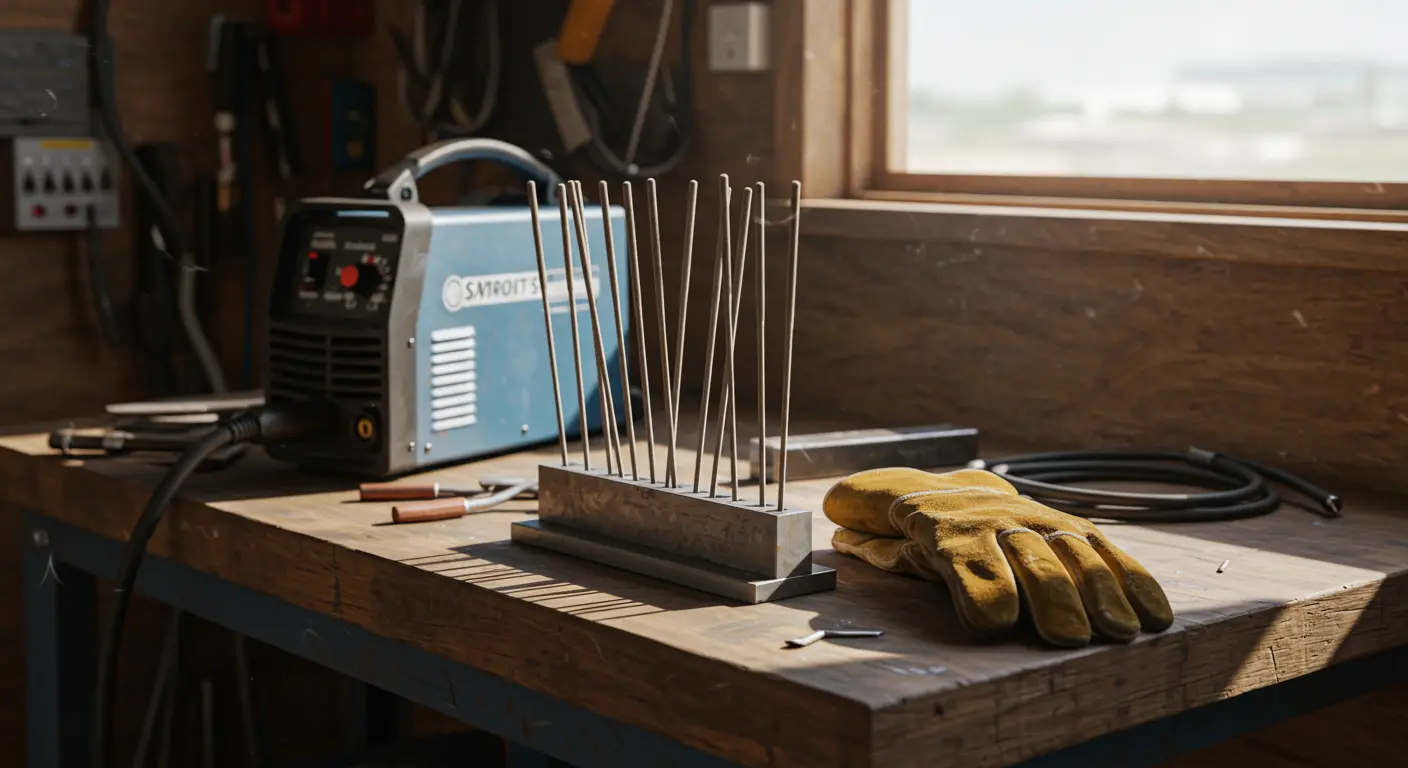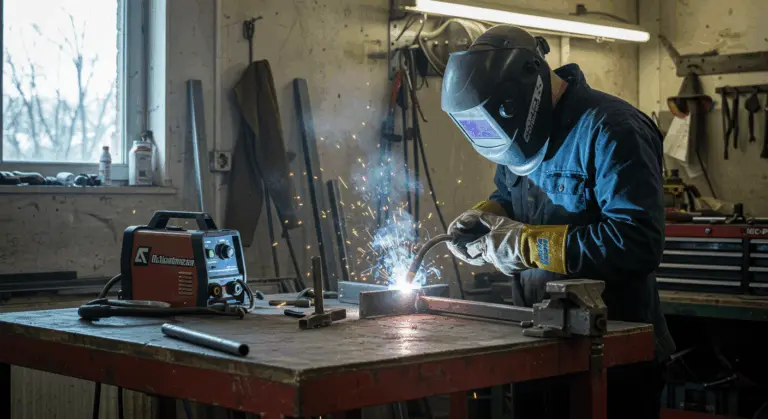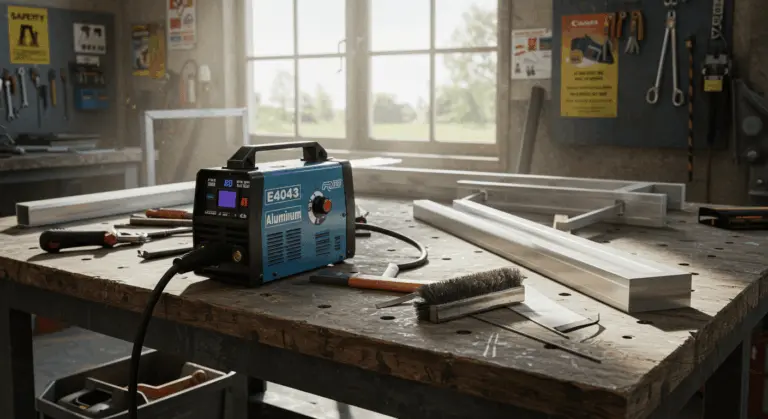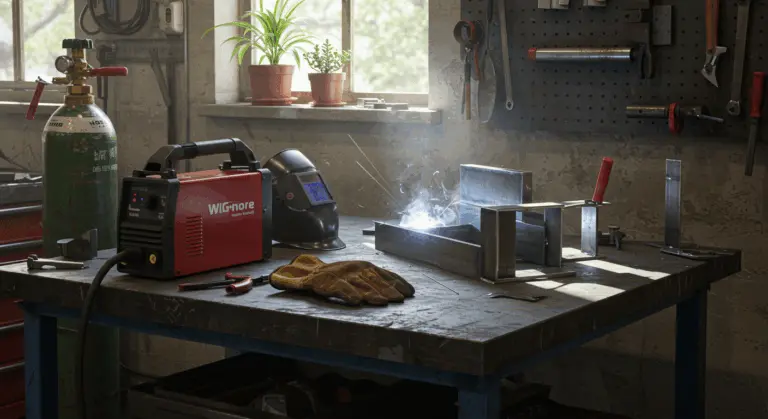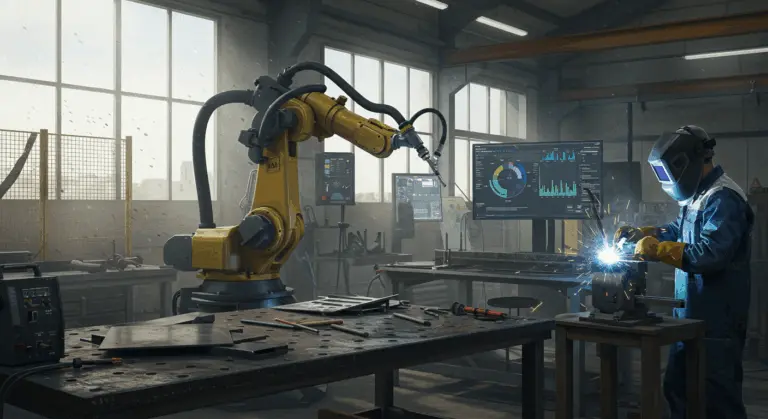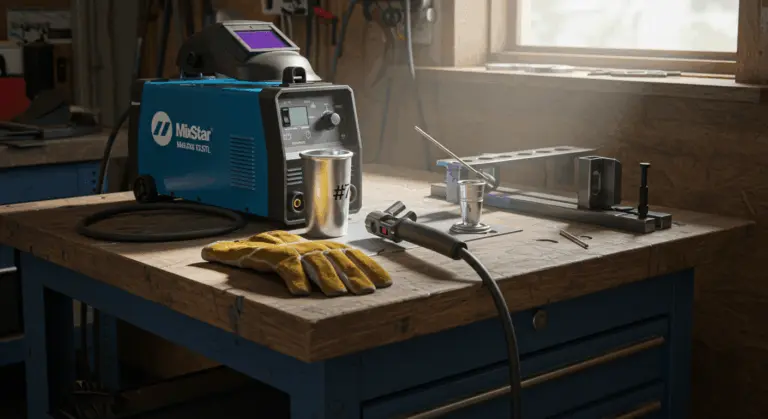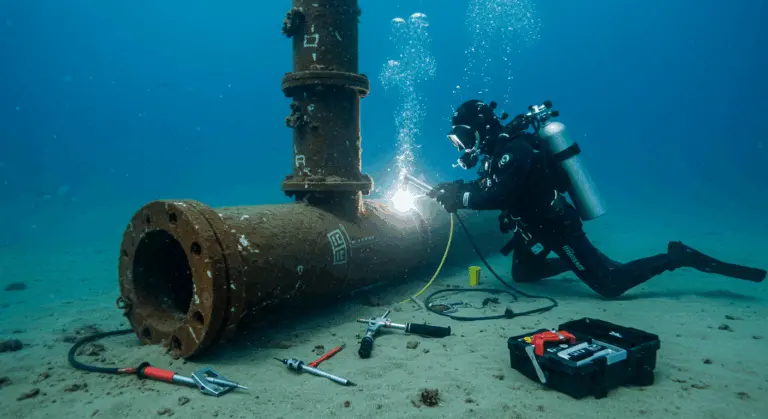Understanding Welding Rod Sizes and Their Importance
A welding rod’s size depends on the diameter of its core wire, excluding the flux coating completely. This fundamental principle means two electrodes share identical sizing if their core wires match—regardless of flux coating variations. For example, both 1/8 inch 7018 and 7024 electrodes possess the same wire diameter, yet their outer dimensions differ dramatically due to flux thickness disparities.
Faced with an unmarked electrode? Simply measure the diameter of the metal portion that clamps into your electrode holder. This measurement reveals the core wire diameter—your rod’s official size designation.
Welding rods offer considerable complexity beyond mere diameter measurements. They vary significantly in composition, coating characteristics, positional capabilities, and specialized applications. Different rods are designed for specific materials—some excel with mild steel, while others handle stainless steel, aluminum, or cast iron challenges. Coating thickness varies substantially too, with heavy-coated rods delivering distinct advantages compared to their light-coated counterparts, typically reserved for precision work.
The American Welding Society (AWS) classification system helps welders navigate these variables by accounting for:
-
Composition
-
Flux type
-
Tensile strength
-
Welding position capabilities
-
Required polarity
Understanding this system is essential for selecting the right electrode.
Common Welding Rod Sizes and Their Applications
Stick welding rod sizes range from thin 1/16 inch (1.4 mm) electrodes to thick 1/4 inch (6.4 mm) electrodes and beyond. Size selection depends on base metal thickness and your machine’s amperage capabilities. Larger diameter rods handle thicker metals but demand substantial amperage. Smaller rods excel with thinner materials while requiring modest power.
Three sizes dominate everyday welding applications:
-
3/32 inch (2.4 mm): The most popular size for general-purpose welding, offering versatility and ease of use for beginners.
-
1/8 inch (3.2 mm): A common size providing a good balance of heat and control, ideal for materials up to 3/16 inch thick.
-
5/32 inch (4.0 mm): Used for materials up to 1/4 inch thick, requiring up to 200 amps.
Specialty sizes create specific challenges. Small 1/16 inch and 5/64 inch rods work with thin workpieces but demand exceptional skill for effective use. At the opposite extreme, large 3/16 inch rods handle thick workpieces yet typically require seasoned welders to handle their demanding characteristics properly.
Industry standards exist for specific applications, with 7018 rods widely recognized for structural carbon steel welding in bridges and military vessels where strength is critical. Rod size selection depends on project requirements, though common sizes satisfy most welding needs admirably.
How to Choose the Right Welding Rod Size
Selecting the appropriate welding rod size is essential for strong, high-quality welds. Base metal thickness serves as your primary consideration when choosing rod size. A good rule of thumb: select a rod one size smaller than your base metal thickness. Welding 1/8 inch thick metal? A 3/32 inch rod becomes your optimal choice.
This sizing principle ensures proper heat distribution and penetration throughout your weld. For metals under 3/16 inch thick, using an electrode one size down from material thickness proves advisable. However, never venture smaller than half the material thickness—inadequate penetration becomes a real risk.
For specific thickness ranges, consider the following:
-
Up to 3/16 inch thick: A 1/8 inch (3.2 mm) electrode works well.
-
Up to 1/4 inch thick: A 5/32 inch (4.0 mm) electrode is suitable.
-
Thicker metals: Larger electrodes are necessary, requiring high amperage and often multi-pass techniques.
Professional welders sometimes prefer using rods half as thick as the base metal for optimal results, particularly in demanding applications. This technique provides better weld pool control and heat input management, creating stronger welds with minimal distortion.
Base Metal Thickness and Electrode Size
These recommendations assume single-pass welding scenarios. Thicker materials requiring multiple passes require careful planning. Start with a larger electrode for the root pass, then transition to smaller sizes for subsequent fill and cap passes. This technique provides good root penetration while giving better control for finishing passes.
Joint design significantly influences electrode size selection. Butt joints typically demand greater penetration than lap or fillet joints, potentially affecting your electrode choice even when working with identical base material thickness.
Welding Position and Its Effect on Electrode Size
Welding position significantly affects electrode size selection, often requiring changes to standard thickness-based recommendations. Flat or horizontal positions accommodate larger-diameter rods at their recommended amperage ranges. In these positions, gravity helps, assisting with joint filling and weld pool control.
Vertical and overhead positions are much more difficult—gravity works against your weld pool. Maintaining control and preventing dripping requires smaller-diameter electrodes, as larger rods create unwieldy puddles that compromise both weld quality and safety.
For vertical and overhead welding:
-
Use an electrode one size smaller than you would for a flat position.
-
Reduce your amperage slightly.
-
Focus on maintaining a small, controllable weld pool.
Consider this example: while you might normally employ a 1/8 inch electrode for specific thickness in flat position, overhead welding of identical material might necessitate switching to a 3/32 inch electrode. This smaller diameter generates a manageable puddle less prone to dripping or sagging.
Electrode diameter influences current density and wear characteristics. Smaller rods exhibit higher current density and accelerated wear rates—factors affected by amperage settings and applied welding force.
Welding Rod Amperage: How It Relates to Rod Size
The relationship between welding rod size and amperage is important for achieving optimal weld quality. Each electrode diameter possesses a specific amperage range for best results. Operating beyond these parameters causes welding defects.
A common industry rule suggests approximately 1 amp per thousandth of an inch of electrode diameter. A 1/8 inch (0.125 inch) electrode would need roughly 125 amps. This serves as your starting point, though ideal amperage varies based on electrode type, welding position, and joint configuration.
Typical amperage ranges for common electrode sizes are:
-
1/16 inch (1.6 mm): 20–40 amps
-
5/64 inch (2.0 mm): 25–60 amps
-
3/32 inch (2.4 mm): 40–90 amps
-
1/8 inch (3.2 mm): 75–130 amps
-
5/32 inch (4.0 mm): 110–200 amps
-
3/16 inch (4.8 mm): 140–250 amps
-
1/4 inch (6.4 mm): 200–350 amps
Large-diameter rods (exceeding 5/32 inch) need high amperage—often exceeding 200-250 amps—which exceeds most hobbyist welding machine capabilities. These large rods generate substantial weld puddles that are hard to control, particularly for novice welders. They also produce increased heat, sparks, and spatter, potentially causing distortion and warping on thinner workpieces.
On the other hand, small-diameter rods (1/16 or 5/64 inch) have their own problems, requiring low amperage (20–50 amps) making it difficult to maintain stable arc maintenance. The arc may extinguish unexpectedly, causing rod sticking, while small electrodes tend to bend or vibrate, making difficult manipulation.
Popular electrode types have different amperage preferences—7018 electrodes work best at 120–130 amps for 1/8 inch diameter, while 6010 electrodes of identical size perform well at 90–110 amps. Finding the best amperage for your application requires test welds on similar thickness scrap metal, followed by adjustments based on results.
Troubleshooting Common Welding Issues Related to Rod Size
Inappropriate welding rod size selection causes many problems affecting both weld appearance and structural integrity. Understanding these issues and their relationship to rod sizing helps troubleshoot and improve your welding outcomes.
Oversized rods for given metal thickness create excessive heat input, which can cause warping, distortion, or serious blow-through on thinner materials. The large weld pool created by oversized electrodes becomes difficult to control, resulting in poor bead appearance and defects including overfill, inadequate tie-in, and convex welds failing to properly fuse with base metal.
On the other hand, undersized rods for the application can cause inadequate penetration, leaving welds vulnerable to stress failure. Small electrodes used on thick materials frequently create welds with insufficient fusion and potential slag inclusions, which weakens the joint.
When the Amperage is Too Low
Insufficient amperage for your selected rod size causes obvious problems affecting weld quality. The most obvious sign? Difficulty starting or maintaining stable arcs. You’ll notice electrodes frequently sticking to workpieces or arcs extinguishing unexpectedly during welding.
Welds made with insufficient amperage typically show:
-
Narrow, convex beads that sit on top of the metal.
-
Poor fusion (tie-in) at the weld edges.
-
Slag entrapment, as the weld pool is too cool.
-
Inconsistent bead width and height.
-
Lack of penetration, resulting in a weak joint.
These issues arise because insufficient heat prevents proper melting of both electrode and base metal, yielding cold, weak welds. Correcting this requires gradually increasing amperage until achieving stable arcs and observing proper fusion at weld bead edges. Alternatively, consider switching to smaller diameter electrodes requiring less amperage for effective operation.
When the Amperage is Too High
Excessive amperage relative to welding rod size causes clear problems in your welds. When amperage runs too high, electrodes melt too rapidly, creating hard-to-control weld pools and dangerous welding conditions.
The signs of excessive amperage include:
-
Wide, flat, or concave beads with poor edge definition.
-
Burn-through, especially on thin materials.
-
Excessive spatter around the weld.
-
Undercutting at the weld edges, which erodes the base metal.
-
Overheating of the electrode, causing the flux to break down.
-
Poor penetration, as the fluid weld pool flows over the surface.
To address these issues, you can:
-
Reduce your amperage to the recommended range.
-
Increase your travel speed to compensate for the high heat input.
-
Switch to a larger diameter electrode if the material thickness allows.
Getting the balance right between amperage and rod size is important for making good, strong welds with good penetration and minimal defects. Always begin with manufacturer-recommended amperage ranges for your specific electrode type and size, then adjust slightly based on actual results.
Maintaining Your Welding Rods for Optimal Performance
Proper welding rod storage and maintenance is as important as selecting appropriate sizes for your application. Electrodes, particularly flux-coated varieties, easily pick up moisture and contamination, badly affecting weld quality regardless of correct size selection.
To maintain your welding rods in optimal condition:
-
Store electrodes in a dry, sealed container or a specialized rod oven.
-
Keep low-hydrogen electrodes (e.g., 7018) in a rod oven at 250-300°F (121-149°C).
-
Recondition low-hydrogen rods in an oven if exposed to air for over 4–5 hours.
-
Inspect rods for damaged flux, rust, or discoloration.
-
Separate and label different types and sizes of electrodes.
-
Avoid extreme temperature changes that can cause condensation.
-
Handle electrodes with clean, dry gloves to prevent contamination.
-
Discard any damaged or contaminated rods to prevent weld failure.
Proper maintenance makes sure your chosen electrode performs as intended, producing clean, strong welds with minimal defects. Keep in mind: even perfectly sized electrodes will produce disappointing results without proper storage and maintenance protocols.

